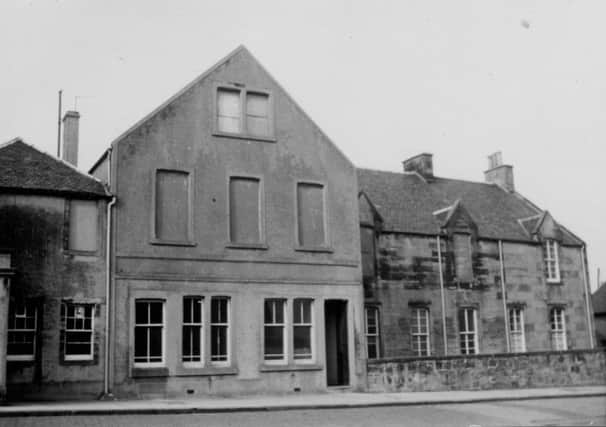An new school of thoughtbrought change to town


All over the district well-heeled iron masters, bankers, coal owners, brewers, lawyers and landowners shared the same advantages earned from Falkirk’s fertile carselands and unrivalled skill in iron founding. But as I said then, there was another side to this prosperity. For hundreds of working people, life in Victorian Falkirk was a stark contrast. In the overcrowded slums of the Back Row and the Garrison fevers brought death to many before the age of 40 and killed children in huge numbers before their teenage years. Not until the 1840s was any sustained effort made to change things and most of the remedies were opposed by the great and the good who objected to their taxes being used to fund such notions.
But a growing body of opinion prompted by developments in England and by the birth of the Free Church of Scotland in 1843 demanded action and in due course change for the better did come to the town.
Advertisement
Hide AdAdvertisement
Hide AdThe improvements took many forms; a fever hospital on Slamannan Road in 1847, a poors’ house at the foot of High Station Road in 1850, a new charity school in the Pleasance in 1853 and the cottage hospital in Thornhill Road in 1889.
There were also new water supplies, improved sanitation and the upgrading of streets and houses all of which helped transform the look of the town and the lives of the population.
Among the institutions created during the period one has had less than its fair share of attention. The Ragged or Industrial School opened its doors in East Bridge Street with nine destitute children in 1857 and two years later moved to a fine new building in Kerse Lane.
The ragged school movement started in London but was taken up in Edinburgh by Rev Dr Thomas Guthrie a Minister in the Free Church. He opened schools for abandoned children in the 1840s and toured the country exhorting others to do the same.
Advertisement
Hide AdAdvertisement
Hide AdThe idea caught on and in a number of industrial towns, including Falkirk, the churches helped raise the necessary funds.
There had been concern for some time about the number of children living on the streets without homes or parents and with no connection to church or school. For many of them the demon drink was an early temptation and a life of petty crime often followed.
The Ragged School offered accommodation, food, basic schooling, simple work (like chopping sticks and selling them round the doors) and, of course, plenty of good old fashioned religion!
The clergymen of the town and their congregations raised money to support the children and their teachers and the leading men of the community vied with one another to play the part of patron to this worthy institution. Christmas and other special occasions such as coronations or royal birthdays offered the opportunity for festivities where children were given cake along with advice about how to good boys and girls!
Advertisement
Hide AdAdvertisement
Hide AdThe number of children varied greatly but, by the late 1860s, there were around 50 children in residence and 80 in 1872. By then the Government had introduced its major educational reform act and the need for such schools declined.
Kerse Lane closed in 1900 and its funds were transferred to the Cottage Hospital. Only the building remained to serve for many years as a model lodging house. It survived until 1991 when it was replaced by a block of modern flats.